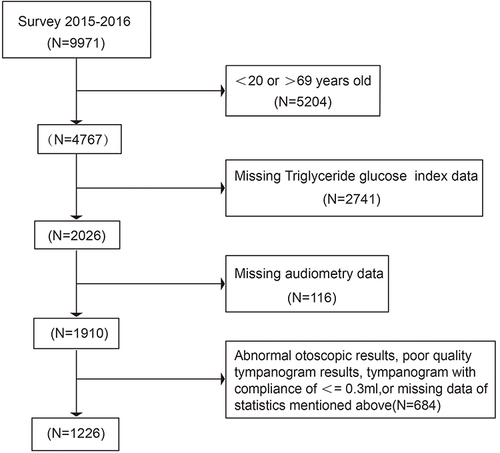Figures & data
Figure 1 Flow chart of the selection.

Table 1 The Weighted Demographic Characteristics of Study Participants
Table 2 The Univariate Analysis of Comparison of Variables in Hearing Threshold Group
Table 3 Multivariable Linear Regression Models for Outcome of Hearing Thresholds
Table 4 The Results of Two-Piecewise Linear Regression Model Between TyG Index and Hearing Thresholds
Figure 2 The relationship between TyG index and hearing threshold shifts: (A) low-frequency PTA, (B) speech-frequency PTA and (C) high-frequency PTA.

